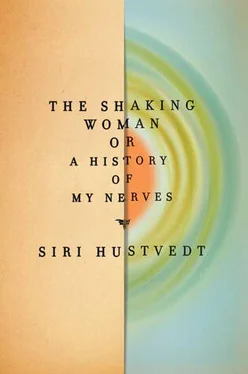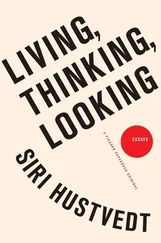Another of A. R. Luria’s patients, S., whom the neurologist studied for thirty years and wrote about in his book The Mind of a Mnemonist: A Little Book About a Vast Memory, had the ability to convert lengthy lists of numbers and words into mental pictures of places:
When S. read through a long series of words, each word would elicit a graphic image. And since the series was fairly long, he had to find some way of distributing these images of his in a mental row or sequence. Most often (and this habit persisted throughout his life), he would “distribute” them along some roadway or street he visualized in his mind. Sometimes this was a street in his home town, which would also include the yard attached to the house he had lived in as a child and which he recalled vividly. On the other hand, he might also select a street in Moscow. Frequently, he would take a mental walk along that street — Gorky Street in Moscow — beginning at Mayakovsky Square, and slowly making his way down, “distributing” his images at houses, gates, and store windows. At times, without realizing how it had happened, he would find himself back in his hometown (Torzhok), where he would wind up his trip in the house where he had lived as a child. The setting he chose for his “mental walks” approximates that of dreams, the difference being that the setting in his walks would immediately vanish once his attention was distracted but would reappear just as suddenly when he was obliged to recall a series he had “recorded” in this way. 107
Luria doesn’t mention the classical systems, nor did S. study Cicero. His memory came to him naturally, as it were, a product of his synesthesia, which is a crossing of senses — tasting colors, for example, or seeing sounds. The great physicist Richard Feynman saw equations in color: “When I see equations, I see the letters in colors — I don’t know why… light tan j’s, slightly violet-bluish u’s and dark brown x’s flying around.” 108
The first stanza of Rimbaud’s poem “Vowels” gives a perfect evocation of this form of synesthesia:
Black A, white E, red I, green U, blue O — vowels
Some day I will open your silent pregnancies:
A, black belt, hairy with bursting flies,
Bumbling and buzzing over stinking cruelties. 109
S.’s prodigious memory was the result of his vivid internal visual perceptions. The man saw everything. “Even numbers remind me of images,” he explained. “Take the number 1. This is a proud well-built man; 2 is a high-spirited woman, 3 a gloomy person (why, I don’t know), 6 a man with a swollen foot.” 110The enormous scope of S.’s memory, however, was in many ways a hindrance to understanding the world around him. He had difficulty following stories and poems, because every word he read would produce an elaborate visual image. By the time he made his way to the end of a sentence he was thoroughly confused by the myriad, detailed, and competing pictures that cluttered his mind. A list of unrelated numbers or words was therefore far more conducive to his gifts, because each entity could exist as an isolate. By turning every sign into a concrete visual image, he became unable to grasp their meanings abstractly and so lacked the ability to distinguish between what was important and unimportant. The hierarchies of semantics vanished in a visual democracy. S. resembles no one so much as the hero of Jorge Luis Borges’s story “Funes the Memorious.”
He was, let us not forget, almost incapable of ideas of a general, Platonic sort. Not only was it difficult for him to comprehend that the generic symbol dog embraces so many unlike individuals of diverse size and form, it bothered him that the dog at three fourteen (seen from the side) should have the same name as the dog at three fifteen (seen from the front). His own face in the mirror, his own hands, surprised him every time he saw them.
Near the end of the story, the narrator comments on the hero, “I suspect, however, that he was not very capable of thought. To think is to forget differences, generalize, make abstractions.” 111Unlike Funes, whose visual memory was perfect, S. found it hard to remember people’s faces (proposagnosia) or register the emotions on those faces, something now associated with both autism and lesions that affect a particular part of the brain vital to face recognition, the fusiform gyrus. His extraordinary skills as well as his deficits would today earn S. not only the descriptive designation “synesthete,” but also a diagnosis: Asperger’s syndrome.
Perhaps it is not surprising that S. had a double, a third-person “he,” who accompanied the mnemonist all his life. He projected his own persona into the landscape. As a child,S. would sometimes lie in bed and watch his double get dressed and go off to school in his place. When S. was eight, his family moved to a new apartment. Here is his description of that event. Note his use of the present tense. He recalls the event as he sees it again:
I don’t want to go. My brother takes me by the hand and leads me to the cab waiting outside. I see the driver there munching a carrot. But I don’t want to go. .. I stay behind in the house — that is, I see how “he” stands at the window of my old room. He’s not going anywhere. 112
Luria identifies this as a “split between an ‘I’ who issues orders and the ‘he’ who carries them out (whom the ‘I’ in S. visualized).” But the “he” is also the one who disobeys, who gets to stay in the dear old room after the “I” is dragged away. “He” fulfills the wishes of the “I.” “He” is akin to a dream figure, which lacks the inhibition of the wakeful S. Even as an adult, S. explained, his double couldn’t always be counted on to behave well:
That is, I’d never say anything like that [a less than polite remark about the quality of his host’s cigarettes], but “he” might. It’s not tactful, but I can’t explain that slip to him. For “I” understand things, but “he” doesn’t. If I’m distracted, “he” says things he oughtn’t to.” 113
In this case, “he” plays the imp of the perverse, the double role familiar from the characters of literature and clinical neurology, but we may all have latent or potential doubles, mirror images acting out what the “I” wants to suppress. Small children with imaginary friends who take the blame for mishaps or naughtiness or who must be consulted before the child obeys a parent are hardly unusual. And like S., every child thinks more concretely than a normal adult. I remember the confusion I felt when, on New Year’s Eve, my parents would put my sisters and me to bed with the words “See you next year!” How a whole year could pass before morning was beyond my comprehension. Both Renee and my pupil Linnie were far more concrete in their thinking than most people their age and, like S., they lapsed into a third-person reality — the self as a “he” or a “she”: “If I had my father’s love, then I would be the real Linnie.” My young writing patient B. also eschewed the “I” for a third-person account in her story about the exchanged notebooks and violent fathers. Isn’t the “I”as “she” in any narrative a form of autoscopy? Like Luria’s twins, Renee, Linnie, and maybe B., too, appear to be stuck in an earlier, less verbally developed, but more visual world. Isn’t it reasonable to speculate that they never gained what some neurological patients have lost?
Luria understood that S.’s rich inner life compromised the generally recognized threshold between fantasy and reality. His mental life was so full that he would often get lost inside it. But S. not only remembered, he imagined . His erect number 1 and gloomy number 3 (the latter is downcast, I am sure, because the fellow’s head is bent over) remind me of my own early personifications of just about everything that came into my visual field: breakfast cereal, sticks, stones, shoes. But then I have long believed that memory and imagination are two aspects of the same process. Neuroscientists now know that when we retrieve a memory, we find not the original memory but, rather, the one we summoned to consciousness the last time we remembered it. In this process, memories mutate. They are not only kept, consolidated in memory, they are re-kept, reconsolidated . Witness my unconscious transfer of a recollection from one house to another. It wasn’t my visuospatial sense that detected my mistake — my humiliation scenario is still staged in that second living room. I have no other convenient place to put it. My recourse to the “truth” of the matter was rational. I recognized the logical impossibility that the scene I had been playing out in my mind had taken place where I saw it.
Читать дальше












